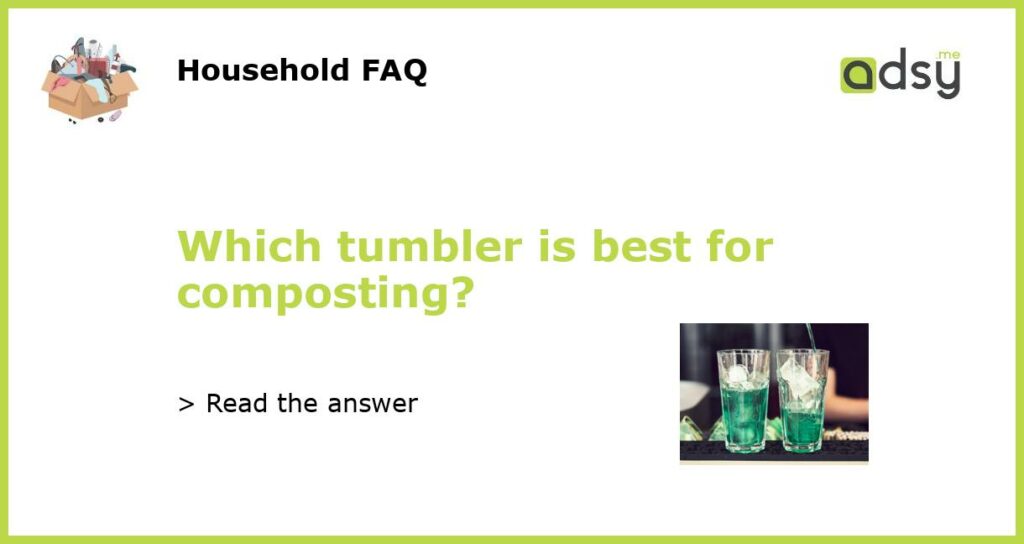Composting: Choosing the Best Tumbler for Your Needs
Composting is a great way to reduce waste and enrich your garden soil. One of the most convenient methods of composting is using a tumbler. Tumblers help speed up the decomposition process, keep away pests, and prevent odor. But with so many options available, which tumbler is best for composting? In this article, we will explore different types of composting tumblers and provide insights to help you make an informed decision.
Understanding the Two Types of Composting Tumblers
There are two main types of composting tumblers: batch and continuous. Batch composting tumblers, as the name suggests, require you to fill them up and let the composting process complete before starting another batch. Continuous composting tumblers, on the other hand, allow you to keep adding new materials while the existing ones decompose. Understanding the differences between the two types will help you choose the best tumbler for your needs.
Batch Composting Tumblers: Pros and Cons
Batch composting tumblers are ideal for those who prefer a fixed process and want to know exactly when the compost will be ready. These tumblers are often larger in size and can handle more composting material. However, they do require space and can take longer to produce finished compost compared to continuous tumblers. If you have a larger garden and don’t mind waiting for the composting process to complete, a batch tumbler may be the right choice for you.
Continuous Composting Tumblers: Pros and Cons
Continuous composting tumblers are perfect if you have limited space or want a constant supply of compost. With continuous tumblers, you can keep adding new materials as the old ones decompose. These tumblers are usually smaller in size and may not handle a large volume of composting material. The composting process is faster compared to batch tumblers, and you can have a continuous supply of compost. However, they may require more attention and care to maintain the right balance of moisture and aeration.
Factors to Consider When Choosing a Tumbler
When choosing a composting tumbler, there are a few factors you should consider:
- Size: Determine how much composting material you generate and choose a tumbler that can handle that volume.
- Materials: Look for tumblers made of durable, weather-resistant materials like UV-protected plastic or stainless steel.
- Rotation: Check if the tumbler has a smooth rotation mechanism that allows easy turning without straining your back.
- Aeration and Moisture: Ensure the tumbler has proper ventilation and drainage to prevent odor and excessive moisture.
- Pest Control: Look for tumblers with tight-fitting lids or pest-proof designs to keep rodents and other pests away from your compost.
Additional Tips for Successful Composting
Regardless of the type of tumbler you choose, there are a few tips that will help you achieve successful composting:
- Balance: Maintain a balance between brown (carbon-rich) and green (nitrogen-rich) materials for optimal decomposition.
- Turning: Regularly turn the compost to aerate it and speed up the decomposition process.
- Moisture: Keep the compost moist, but not overly wet, to support the growth of beneficial microorganisms.
- Layering: Alternate layers of brown and green materials to ensure even decomposition and prevent compaction.
- Patience: Composting takes time, so be patient and allow the process to complete before using the compost in your garden.
By considering the type of tumbler, your specific needs, and following these composting tips, you can choose the best tumbler for composting and create nutrient-rich compost for your garden.






